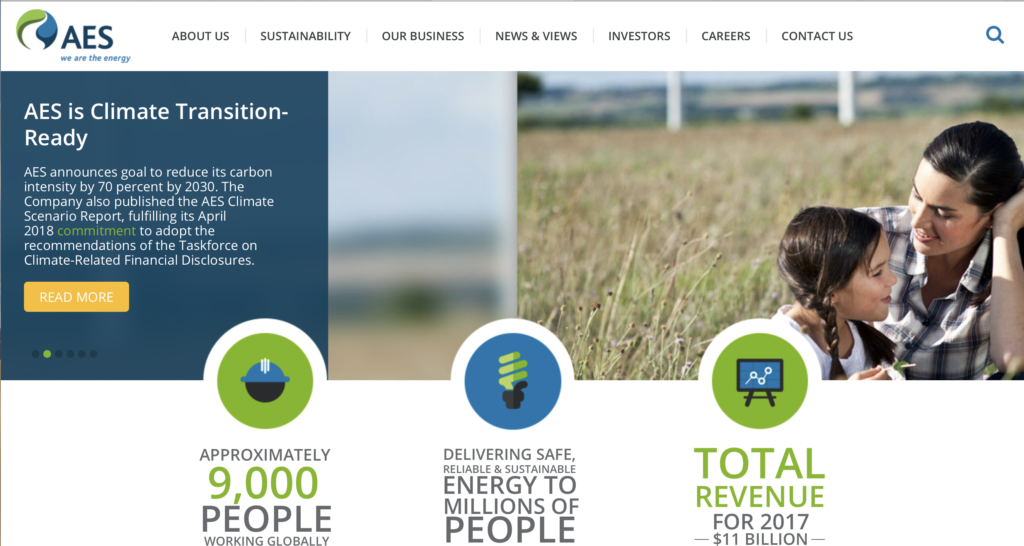AES wants to cut its carbon intensity by 70% by 2030. We want to see the math and the benefits.

Here is the proposal filed on January 11, 2019.
###
Greenwashing Audit
Resolved:
Shareholders request that, beginning in 2019, AES Corporation annually publish a report of actually incurred corporate costs and associated actual and significant benefits accruing to shareholders and the climate from AES’ global climate-related activities that are voluntary and exceed government regulatory requirements. The report should be prepared at reasonable cost and omit proprietary information.
Supporting Statement:
AES’ purpose is to generate profits from generating affordable and reliable electricity while obeying applicable laws and regulations. Maintaining coal plants is the least expensive option for generating electricity per the U.S. Department of Energy’s National Coal Council 2018 report, “Power Reset” (www.BurnMoreCoal.com/wp-content/uploads/2018/10/NCC-Power-Reset-2018.pdf). Yet AES management intends to shutter its remaining coal plants, presumably in hopes of somehow altering global climate change.
This resolution is intended to help shareholders monitor whether AES’ voluntary activities and expenditures touted as protecting the climate are actually producing meaningful benefits to shareholders and the global climate.
Corporate managements sometimes engage in “greenwashing” ⎯ i.e., spending shareholder money on schemes ostensibly environment-related, but really undertaken merely for the purpose of improving the public image of management. Such insincere “green” posturing and associated touting of alleged, but actually imaginary benefits to public health and the environment may harm shareholders by distracting management, wasting corporate assets, ripping off ratepayers and deceiving shareholders and the public.
For example, AES touted in an April 2018 media release that, “The Company has already taken steps that are expected to reduce its carbon intensity by 25%, or 20 million tons of carbon dioxide emissions, from 2016 to 2020, including… the sale or retirement of 4.3 GW of merchant coal-fired generation, representing 37% of the Company’s coal-fired capacity.”
No law or regulation required this reduction. Shareholders should have an honest accounting of this action’s cost and the action’s actual and current (vs. hypothetical or imagined) benefits. After all, AES’ (globally trivial) reduction in CO2 emissions is not an obvious benefit to anyone or anything.
AES stated in a November 2018 media release that it intends to reduce its carbon intensity by 70% by 2030. Once again, no law or regulation requires this action. What will be the actual benefit to anyone or anything of it? Global CO2 emissions are higher now than ever and increasing.
China is reportedly now adding coal plant capacity equal to the entire US coal fleet. Around the world, there are reportedly 1,100 coal plants under construction. In comparison, AES operates a mere seven coal plants. So, what are the actual benefits to ratepayers, shareholders and the climate of meeting AES’ goal? By how much, in what way, and when will any of these activities reduce or alter climate change, for example?
The information requested by this proposal is not already contained in any AES report.
AES should report to shareholders what are the specific actual benefits produced by its voluntary, highly touted and costly global climate-related activities. Are the touted benefits real and worthwhile? Or are they just greenwashing? Shareholders want to know.
